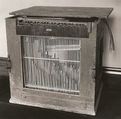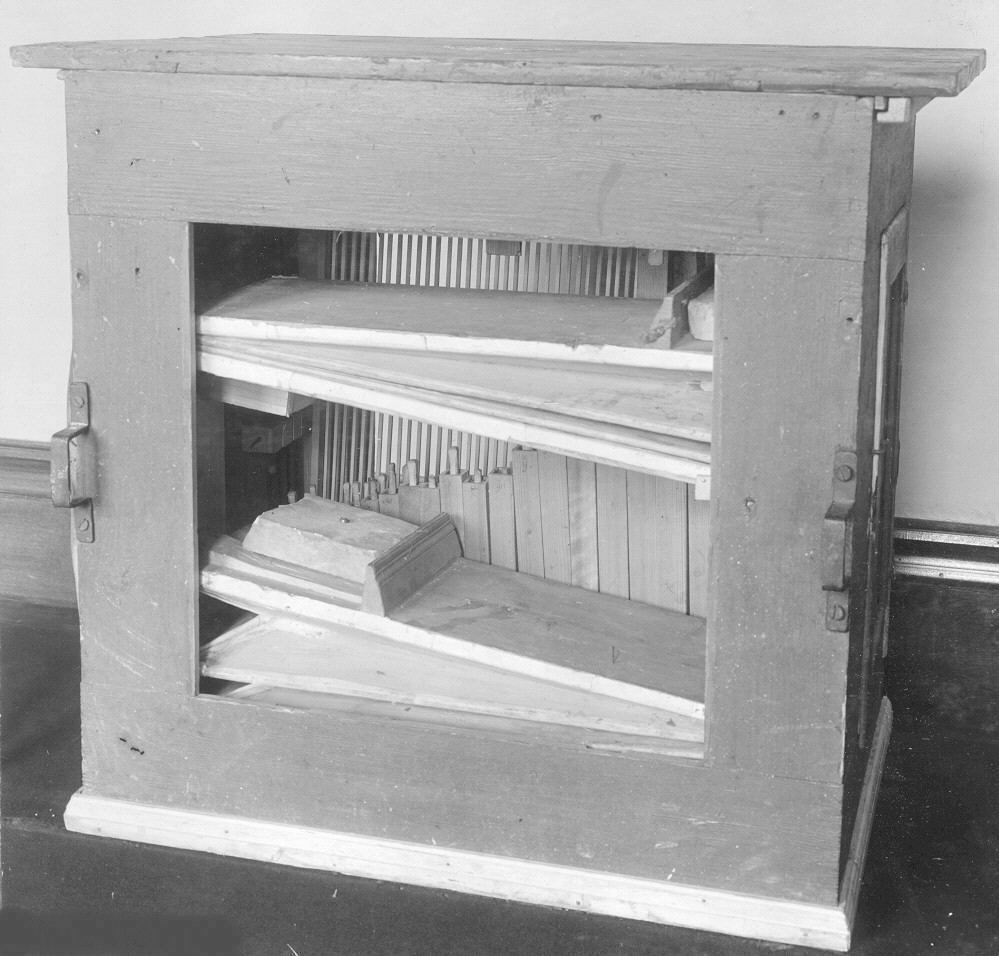Chest Organ
Not on view
Chest organs are named because of their appearance. Housed in a chest, or box, the small organ can be moved around and set on a table, a stool, or the floor for performances. This example houses three ranks of pipes: a stopped wood 4' (Coppel), an open wood 2' (Holzprinzipal), and an open metal 1' (Octav).
Technical description: Softwood chest, or cabinet; four iron stables for carrying staves, the staves missing; panels on all four sides missing; dovetails joining the front and side rails nicely made and still tight; front (keyboard side) stiles are let into rails with dovetail tenons, which are also pegged, the pegs visible from outside; one manual of 45 notes (C/E-c'''); naturals of one piece vertical grain fruitwood, without plating; sharps blackened oak; head 30 mm, tails 50 mm; no appreciable wear shown on playing surfaces nor new parchment hinges; simple sticker action to keyscale windchest, which rests on cabinet bottom; organ shows signs of crude but effective maintenance work, in replacing keyboard hinges, keys became misaligned; a second layer of sheep leather was applied over older leather on the pallets, table top, and toeboard bottoms; replacements were found for missing and damaged pipes; grid, measuring 155 mm x 635 mm, consists of a single piece of wood 22 mm thick, into which channels have been cut to half the thickness, the grain running from bass to treble at right angles to channels; walnut(?) sliders run between table top and toeboard bottom leather, two or three slots guiding each slider on wire pins set into the table; no toeboard bearers; original method of spacing the toeboards above and attaching the toeboards to the grid is uncertain; front rank of pipes on keyscale from A-c''' (40 pipes), receiving wind from holes burned vertically into grid channels; second rank follows same arrangement, but back rank (the 4') receives wind through long and intricate toeboard channels; toeboards of vertical grain softwood except for walnut in larger toeboard for the back two ranks; wind provided by two diagonal bellows lifted alternatively by lanyards hinging out of the treble end of the cabinet, a single leather faced wood pallet serving each bellows as a frog valve; top boards of bellows, each loaded with one stone weight, measure 300 mm x 750 mm; vertical wind trunk from bellows is 45 mm x 115 mm outside; sliders operated by player through iron trundles; back to front, they control a stopped wood 4', an open wood 2', and an open metal 1', which could be called Coppel, Holzprinzipal, and Octav, respectively; original wood pipes of softwood, un-nicked and with thin lips; windway of 4' c is cut in the block (German style voicing).
This image cannot be enlarged, viewed at full screen, or downloaded.
This artwork is meant to be viewed from right to left. Scroll left to view more.



